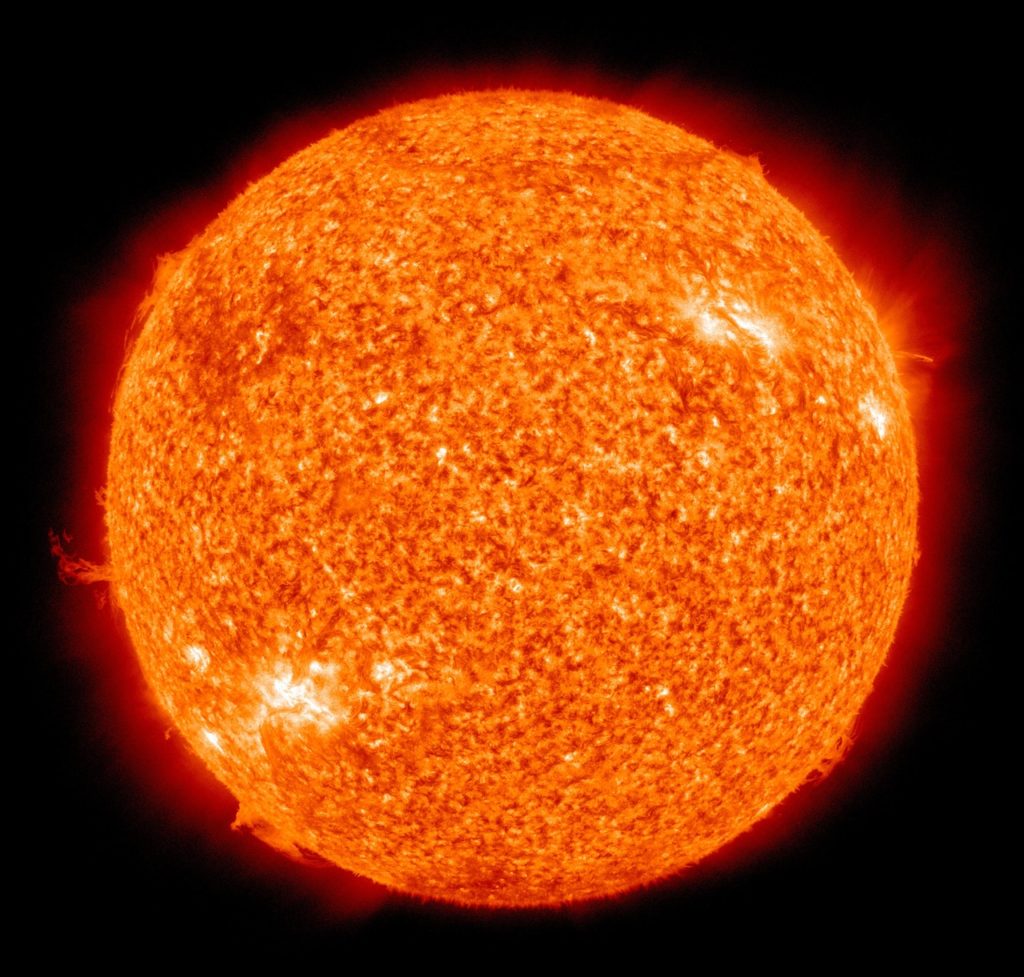
I learned this today. Stars die because they exhaust all of their fuel.
There are seven different types of star. They are classified using the Morgan-Keenan system. They are given the letters, B, A, F, G, K, and M, to show temperature, and Roman numerals to show luminosity. M, the coolest stars, are between 2,400 and 3,700 K. (3,860℃ to 6,200℃). O, the hottest stars, are above 30,000 K (53,540℃). Each letter is broken up into 10 groups (0-9), where 0 is the hottest end of that band and 9 is the lowest. Our sun is a G2V star. That means it is in the G band, which is 5,200 K to 6,000 K (4926℃ to 5726℃). It is 2 in that band, which means it is towards the hotter end. It has the Roman numeral V, which means it is a main-sequence star, or a dwarf.
Almost all of the stars in our universe are made of the same thing as our sun. They are made of hydrogen and helium. The ratio is different depending on the age of the star. In our sun, it is 70% hydrogen and 28% helium. There are 67 other chemical elements present, but they are in negligible quantities.
Hydrogen is present in all stars because it is the most common element in the universe. This is because it is the simplest element. A hydrogen atom has one proton, one electron, and no neutrons. It is one step up from pure energy and therefore makes up about 75% of all matter in the universe. The next element on the periodic table is helium, which has two protons and two neutrons. It makes up 24% of all other mass in the universe.
Stars form when there is gravitational instability in a molecular cloud. Dust and gas start to clump together and grow larger under their own gravity. As they get larger and denser, they collapse under their own gravitational force, which makes them hotter. This can take 10 to 100 million years. When the pressure inside the star and the temperature are high enough, the star starts to convert hydrogen into helium in a process of thermonuclear fusion. At temperatures of over 15 million degrees, the hydrogen atoms have so much energy that they hit each other and stick together. When four hydrogen atoms combine, they make one helium atom. Four hydrogen atoms weigh 4.03130 Atomic Mass Units, and 1 helium atom weighs 4.00268 AMU. That difference of 0.02832 AMU is released as energy. The process keeps going.
Stars, no matter how massive, are finite. They can only keep undergoing thermonuclear fusion for as long as they have a supply of hydrogen. When that fuel runs out is when stars start to die. How they die depends on their size.
Small stars, called red dwarves, can carry on for trillions of years. They don’t use a lot of energy, so their hydrogen stores last a long time. They can also suck in more hydrogen from the outer layers to the core. These stars get brighter as they got older until they burn out. However, no one really knows what happens at the end of a red dwarf’s life because the universe is only 13 billion years old.
Medium sized stars, like our sun, use up all of the hydrogen at their core. As they use it, they slowly build up huge amounts of helium. As they burn up their hydrogen, they will slowly contract because 1 helium molecule takes up the space of 4 hydrogen molecules. As the star contracts, it gets hotter, and starts to burn the hydrogen in the outer layers, which makes the outer layers expand. The star’s radius increases, and it becomes a red giant. Our sun will expand to the orbit of Mars. The core will get hotter until there is a helium flash, and the star starts to burn helium, converting it into carbon. When the helium runs out, the core will expand and cool, becoming a white dwarf. There is no fuel left to burn and the star has no energy. It will cool and become solid, becoming a black dwarf. The process to become a black dwarf is longer than the current age of the universe, so there are no black dwarves yet.
Large stars undergo the same processes as medium stars except they don’t stop when they have become carbon. They have far more mass, creating more pressure and heat, which means they can convert carbon into oxygen, neon, silicon, magnesium, sulfur, and iron. When it has become iron, the core heats up to such high levels that the protons and electrons are forced together and become neutrons. The iron core shrinks to a neutron core, with a radius of about 10 km. The outer layers fall in, crushing it. The core heats up to billions of degrees and it explodes in a supernova. The leftover bits can become a neutron star or, if it was big enough, a black hole.
So, stars begin by converting hydrogen into helium. When their fuel is used up, they start burning the helium and creating carbon. Medium stars will stop at this point and just cool down. Large stars will burn the carbon, getting hotter, until they explode in a supernova. And this is what I learned today.
Sources
https://www.energy.gov/science/doe-explainsnuclear-fusion-reactions
https://www.wwu.edu/astro101/a101_sun.shtml
https://en.wikipedia.org/wiki/Helium
https://en.wikipedia.org/wiki/Hydrogen
https://ptable.com/?lang=en#Properties
http://solar-center.stanford.edu/activities/FingerprintsInStarlight/Inquiry-Questions-Answers.pdf
https://en.wikipedia.org/wiki/Sun
https://en.wikipedia.org/wiki/Stellar_classification
https://en.wikipedia.org/wiki/Star
https://www.sciencefocus.com/space/how-do-stars-die/
https://www.space.com/how-do-stars-die
https://science.howstuffworks.com/star6.htm
https://www.discovery.com/science/how-stars-die–the-big-ones
I learned this today.
Sources
